Key takeaways:
- Eco-certifications serve as a seal of approval, verifying products meet environmental standards and guiding consumers toward sustainable choices.
- These certifications enhance business accountability, drive industry innovation, and help create market demand for sustainable practices.
- Key certifications include LEED, ENERGY STAR, USDA Organic, FSC, and Fair Trade, each supporting various environmental and ethical standards.
- Evaluating certifications involves assessing their specific standards, transparency, and alignment with personal values to ensure informed decisions.
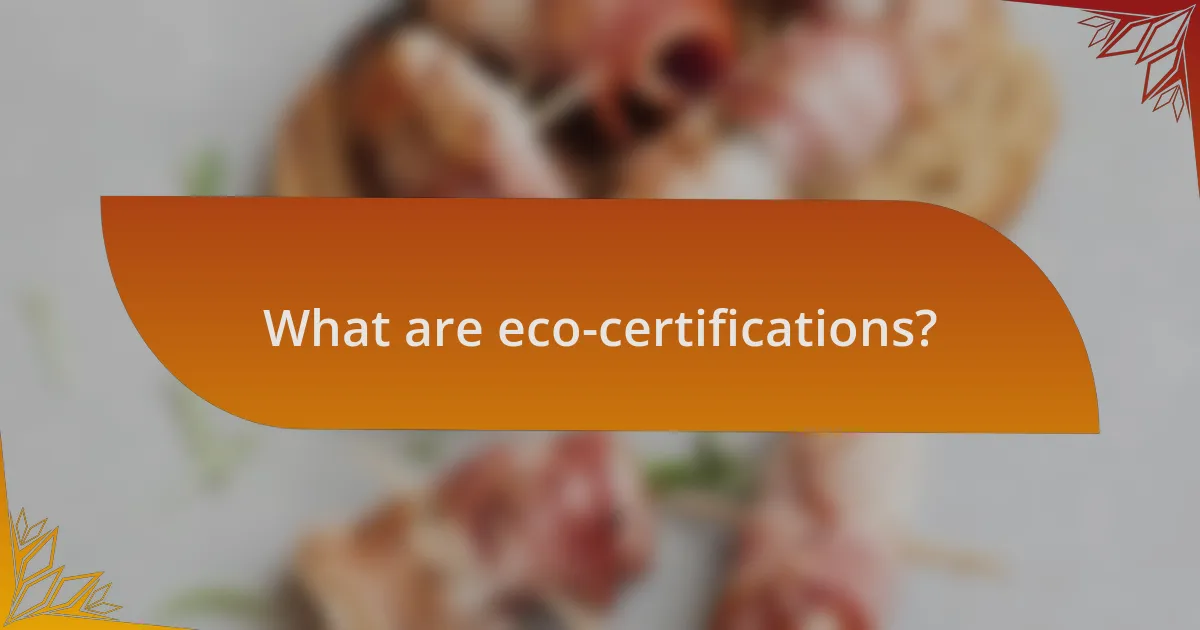
What are eco-certifications?
Eco-certifications are a way to verify that products or services meet specific environmental standards. When I first started my journey toward a more sustainable home, I was overwhelmed by the options. How could I trust that these labels truly represented eco-friendliness rather than just marketing fluff?
These certifications often assess everything from sourcing materials sustainably to ensuring that processes reduce negative impacts on the environment. I remember standing in a store, holding two similar products, one certified and the other not. The certified one gave me peace of mind, knowing that my choice supported more than just my household; it aligned with my values.
In essence, eco-certifications are like a seal of approval for sustainability practices. They guide consumers like me in making informed decisions, empowering us to create a positive change, one purchase at a time. Have you ever felt that rush of satisfaction when you realize your choices can contribute to a healthier planet?
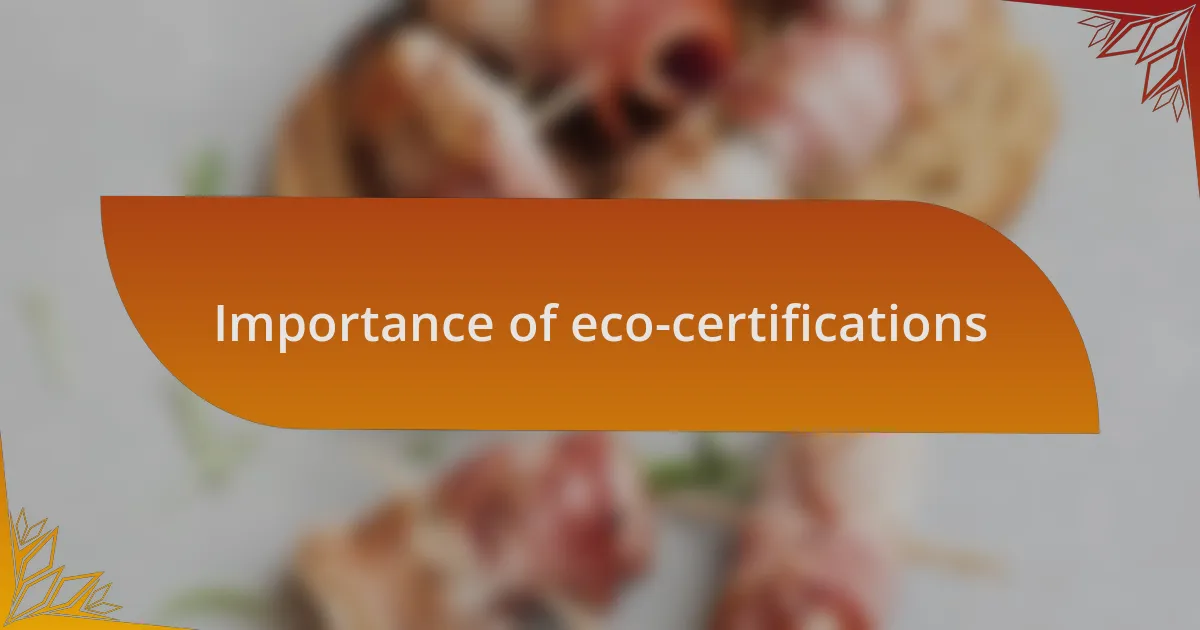
Importance of eco-certifications
The significance of eco-certifications cannot be overstated. They not only help consumers like me identify truly sustainable options but also foster accountability among businesses. When I learned that some companies misrepresent their environmental practices, it reinforced my belief in the importance of reputable certifications. Have you ever doubted the authenticity of a product’s claims?
Furthermore, these certifications often drive innovation in the industry. I’ve seen firsthand how brands that pursue eco-labels are more committed to reducing waste and enhancing their sustainability practices. It’s inspiring to watch these companies evolve, not just for consumer trust, but for the sake of our planet. Isn’t it refreshing to support businesses that strive to do better for the environment?
Ultimately, investing in eco-certified products can also influence broader market trends. When I support these brands, I feel empowered, knowing my choices contribute to a demand for higher standards across the board. It’s like casting a vote for sustainability each time I make a purchase. Don’t you think our collective actions can lead to significant environmental change?
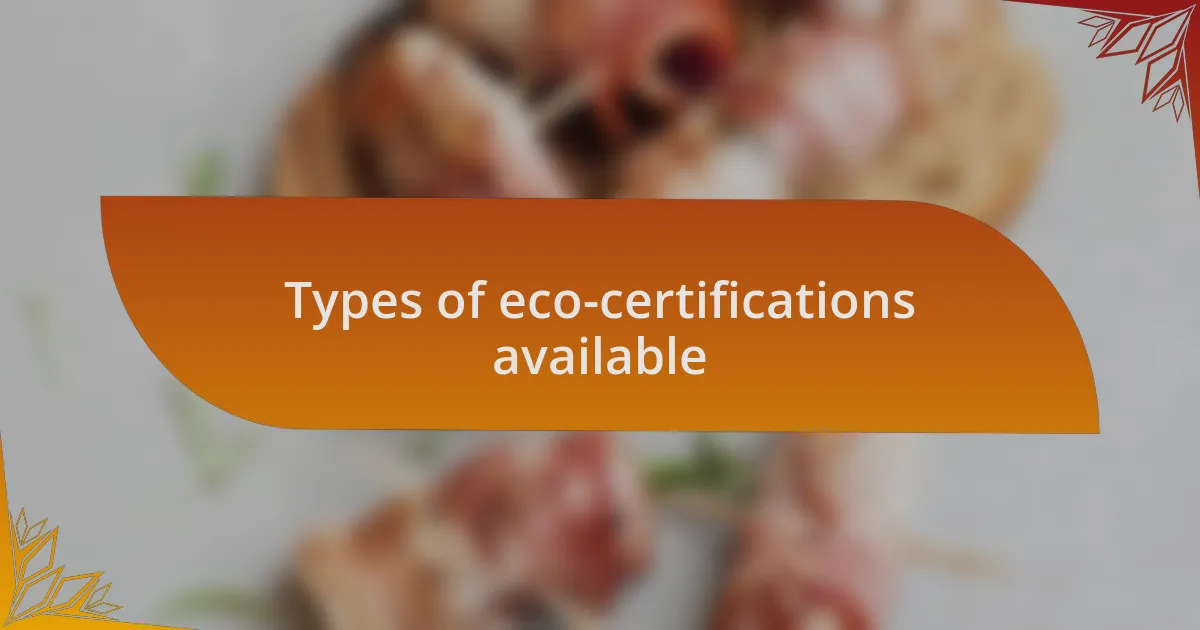
Types of eco-certifications available
When I started exploring eco-certifications, I discovered several prominent types that stood out. For instance, LEED (Leadership in Energy and Environmental Design) is widely recognized in the building sector, encouraging energy efficiency and sustainable building practices. Then there’s ENERGY STAR, which labels appliances and homes that meet strict energy-saving guidelines. Have you ever looked at a product and wondered if it truly meets the standards they claim?
Another area that caught my attention is organic certification. I remember being thrilled to find out that the USDA Organic label assures me that food products are produced without synthetic fertilizers or pesticides. It felt like a weight lifted, knowing that my food choices could significantly impact my health and the environment. Isn’t it comforting to think you can support sustainable farming practices just by opting for organic produce?
In addition to these, there are certifications such as Forest Stewardship Council (FSC), which ensures products come from responsibly managed forests, and Fair Trade, which promotes ethical labor practices in global supply chains. Every time I buy a piece of furniture with the FSC label or coffee bearing the Fair Trade mark, I feel a sense of connection to the artisans and the environment. It really does make a difference to know that our purchases can empower communities and preserve natural habitats, don’t you think?
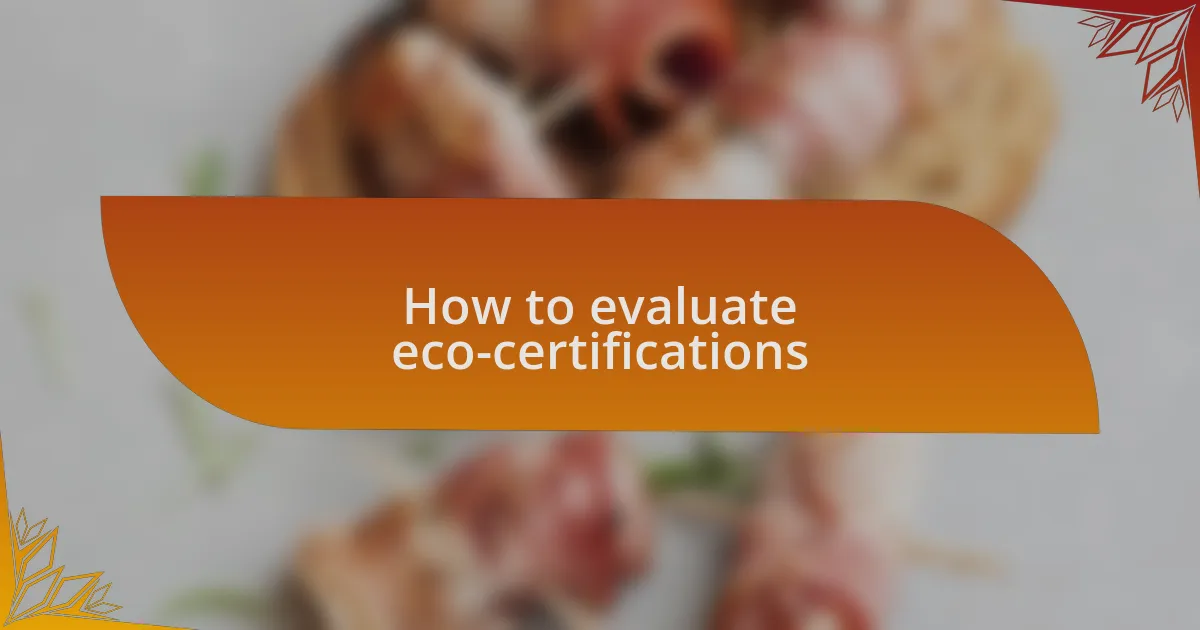
How to evaluate eco-certifications
Evaluating eco-certifications can feel overwhelming, but I always start by diving deep into the specific standards set by each certification body. For example, I once spent hours on the ENERGY STAR website, reading about their testing procedures and how they ensure that products genuinely meet energy efficiency criteria. It helped me understand that not all labels are created equal, and it’s vital to know what benchmarks are used to grant certification.
Another crucial aspect I consider is the transparency of the certification process. If I can’t find clear information about how a certification evaluates compliance or who conducts the assessments, it raises a red flag for me. I remember being excited about a local green label, but after digging a little deeper, I found their practices were not well-documented, making me reluctant to trust their claims. It’s moments like these that emphasize the importance of looking beyond the surface.
Lastly, I always reflect on personal values and how they align with a certification’s mission. When I opted for a home appliance with the LEED label, it wasn’t just about energy savings; it resonated with my commitment to reducing my carbon footprint. Have you had a similar experience where a product made you feel like you were contributing to a larger cause? Those feelings of connection and purpose make eco-certification choices that much more significant.

My criteria for choosing certifications
When I evaluate eco-certifications, I prioritize certifications with a proven track record that resonate with my values. For instance, I was drawn to the Fair Trade certification after reading about its commitment to empowering farmers and promoting sustainable practices. I couldn’t help but feel that choosing products with this certification allowed me to support a bigger movement that aligns with my ethical beliefs.
Another criterion that stands out to me is the rigor of the certification’s requirements. While researching the USDA Organic label, I was impressed by the stringent regulations regarding pesticide use and soil health. I remember the moment I learned about these strict guidelines; it reaffirmed my decision to incorporate organic products into my life, knowing that they contribute not just to my health, but also to the environment’s well-being.
I also take into consideration how accessible information is about the certification’s impact. I find it crucial that organizations share data and success stories. For example, while exploring the Rainforest Alliance certification, I came across compelling narratives about reforestation projects that truly moved me. Have you felt inspired by a story that made a choice feel worthwhile? These personal connections to certifications matter to me—they transform a simple purchasing decision into an opportunity to make a meaningful impact.
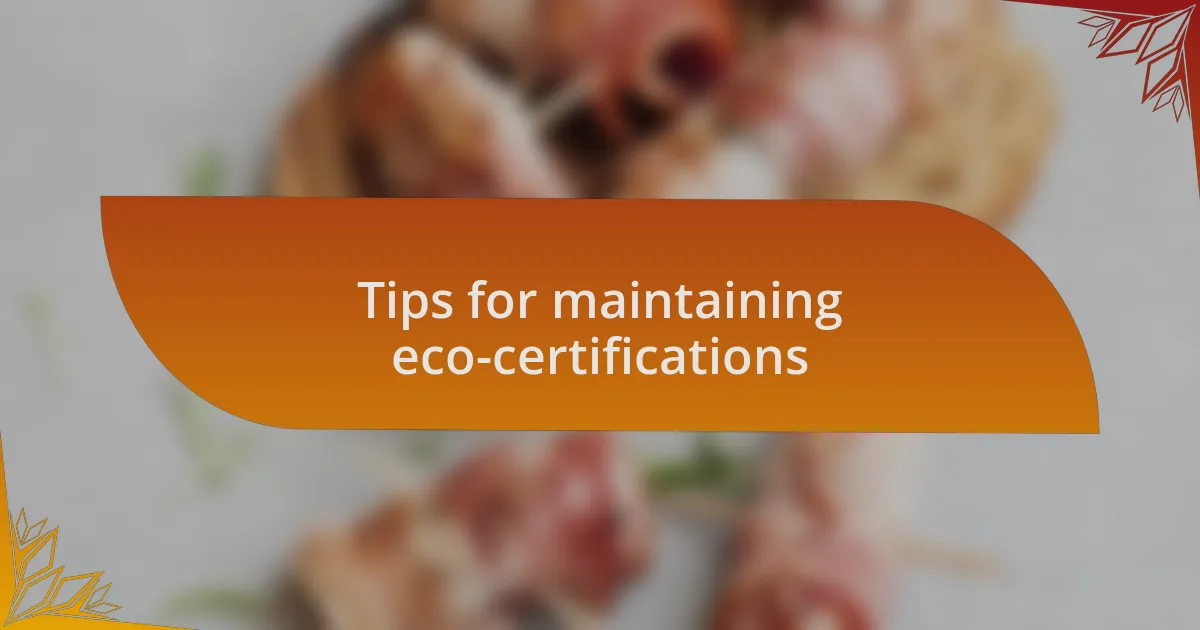
Tips for maintaining eco-certifications
When it comes to maintaining eco-certifications, I believe ongoing education is key. I still remember the first sustainability workshop I attended; it opened my eyes to the nuances of proper certification maintenance. Keeping up with industry standards can seem overwhelming, but engaging with local eco-conscious groups or online communities not only provides you with valuable knowledge but also helps motivate you to uphold those standards.
Regular auditing is another essential practice I’ve adopted. The first time I completed a self-assessment for my home’s green practices, I discovered some areas where I could improve. Setting reminders every few months to revisit your practices not only keeps you accountable but often leads to delightful surprises—like realizing your composting efforts have significantly reduced waste!
Lastly, I’ve learned the power of storytelling in sustainability. Why not share your eco-journey with friends or on social media? When I posted about my experiences with eco-certifications, I was amazed at how many conversations sparked from that. Creating dialogue around your certification journey not only reinforces your commitment but can also inspire others to join in. Isn’t it fulfilling to think your experiences could motivate someone to make greener choices?